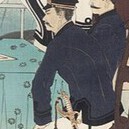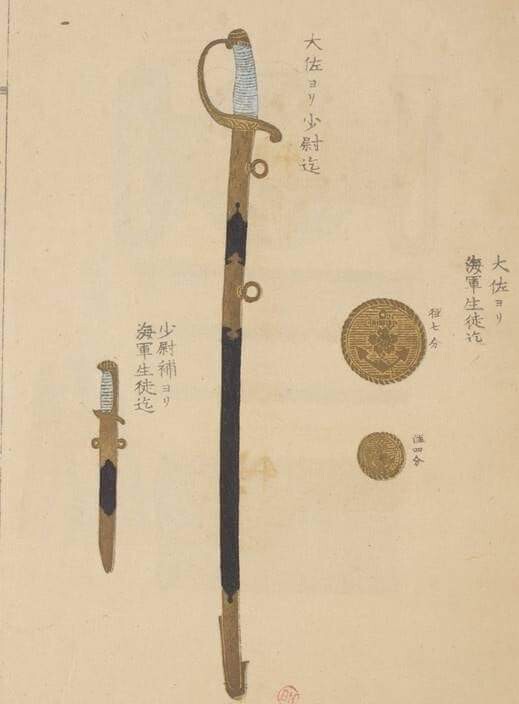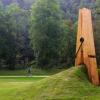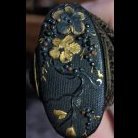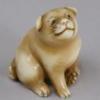Leaderboard
Popular Content
Showing content with the highest reputation on 09/04/2021 in all areas
-
I agree with Stephen; for things of value within the US it has to be registered mail from the post office. Beyond what Stephen said, if the package spends a night in a post office it has to be in a safe. And it isn't expensive. I'm about to ship a large tube with 5 swords and some boxed fittings to the east coast. 10 pounds and $20,000 on value will be about $108 with full insurance. Registered can't get lost; as my guy at the PO says, "If you lose registered you lose your job." Grey5 points
-
It’s signed ‘Kashu Fujiwara Ietsugu saku’ (加州藤原家次作).4 points
-
4 points
-
For 4000usd.....I would avoid it. Much better options out there for the money. The polish looks amateur and the mounts are not inspiring.4 points
-
For what it's worth...and just my .02 worth. I have recently started using DHL for ALL my shipping of important items. I started using them just about 2 years ago. Below is the breakdown of my experience with DHL, 1.) They are expensive (worth every penny). 2.) They are shockingly efficient. 3.) They up date you with absolutely every move the package takes (damn near hour by hour). 4.) They deliver so fast it makes your head spin. I have used them to ship from Japan to the USA, 2 times. Each time less than 48 hour total time frame. I have used them to ship from east coast USA to west coast USA 1 time, slightly less than 24 hour total time frame. I have used them 1 time from England to USA, less than 48 hour total time frame. I personally will no longer use any other mailing/shipping service if given the choice. Mark4 points
-
Item No. 108 - Iron Tsuba with gold 76.9 cm x 7.12 cm x 0.56 cm Subject of peony and shi-shi in sunken relief cave or caverns. Signed Yoshihiro- age unknown. Could this Yoshihiro be from the Myochin lineage ? If so it would be of considerable age but somehow it feels younger in the hand. High grade workmanship all round with painstaking details on the rock carving and a highly animated shi-shi almost leaping free from the plate. The peony, eye and bud appear to have been carved from solid gold . The plate itself showing pleasing grain structure , not untypical of Myochin , hence the question above regarding artist school. As usual , any comments , help or corrections gratefully received.4 points
-
I was going to post this in Edo Period Corner Part II, but a message popped up saying the topic is old, so would I consider starting a new thread, unless it was particularly relevant. My fault I guess for not refreshing it. Yesterday the news arrived that all further regional live appearances in 2021 have been cancelled for our matchlock troop. "Even the annual purification event at Kibitsu Hiko Jinja?" I asked. (See last autumn's posts and videos.) "Yes, that too, everything!" came the answer. "Anything that draws crowds is out, under the extended state of emergency." "Ah" I replied sadly, thinking of the heap of armour where I last took it off back in April, still needing an excuse for sorting out and hanging up. Today, however, the message came through that Kibitsu Hiko Jinja now require our presence in their Autumn 神事 'Shinji' Shrine Dedication Ceremony, which will be going ahead, together I guess with the Tameshigiri and Yabusame peformances. If it is the same as last year, it will be a private shrine service for small numbers with no crowds. About half the day is taken up with blessings and prayers at various portable altars set up here and there. Anyway, this will be an excuse to air the armour in preparation, and to clean and prime the guns. I know those invited will be thinking of which helmet, which maedate, which cuirass, which sword or tanto etc., to wear for the occasion. Compilation from last year taken from the shrine's home page. https://www.kibitsuhiko.or.jp/event.html3 points
-
Very nice Austin, well done. I didn't want write too much to not influence other guesses. To me I thought the shape and size would fit into Ōei-Bizen and as it was suguha I went for Yasumitsu. Unfortunately I lack the skill & knowledge to do accurate identification and guessing based on fine details. Thanks for posting this up Eric, it was really fun guessing game. I am always hoping more people would participate in these, of course it is usually very tricky and as you need to enter the guess out in public it might put some people off. Big thumbs up for everyone who made a guess3 points
-
I'm sure there will be errors in this but 備前国長船則光 文明九年製作而五郎左衛門尉也惟時同工七十二歳同工ハ祐光ト並ビ応永備前カラ末備前へノ過渡期ニ活躍ツタリ 本刀ハ比較的短寸ノ打刀デ精良ナル板杢ノ肌合ニ穏ヤカナ中直刃ヲ焼キ刃ニ近ク直映ガ立ツナド其ノ一作風ヲ示ス優品也2 points
-
One suggestion with FedEx. NEVER have it delivered to your home or place of business. ALWAYS have it redirected and delivered to one of the affiliated businesses that will hold your package until you pick it up. No “we delivered it but no one was home” or ‘somebody’ signed for it “we think” type situations. I used a local 24 hour pharmacy so no excuses that it was closed and couldn’t be delivered, etc. Just my opinion.2 points
-
Unfortunately it is much too difficult to read for me to get fully. Here is part of the start of which I am thinking I got correctly but there are few blanks as I am not sure if I was correct on those. 備前国長船則光 文明九年製囗囗五郎左衛門尉囗囗囗同工七十二歳同六祐光囗囗応永備前囗囗末備前2 points
-
Hi Bob, on the design of Item No. 108, it is a rare combination of two different Shishi motifs. One is Shishi-Botan ("Liondog and Peony") which means regal or ultimate power because the Shishi is considered the King of the Beasts and the Botan (Peony) is the Queen of the Plants. The second motif is “shishi no ko otoshi” (shishi dropping its cub), where the shishi throws its young off a cliff and will only raise the cubs that survive and climb back up the cliff (tough parenting...) The motif is often represented by just the parent on a cliff or rock or the cub falling or climbing up or down a cliff (often suggesting but omitting one of these elements). Sometimes these elements are represented on different parts of the tosogu (so we shouldn't break up these sets....) This motif was to remind the Samurai to be a great leader and rigorously train themselves and their subordinates.2 points
-
Not to get in the way of Peter's ambitions regarding the red list. And agreeing with all that has been said about the For Sale section, especially Stephen's sword. This is a perfectly legitimate Japanese sword with a late but authentic koshirae. All the best.2 points
-
Just a quick update the seller accepted the sword back. I can lawfully demand a refund but for now have requested they try to source an alternative, but with the replacement to have its authenticity verified first. They tried to interest me in a "police sword" which will appear in a new thread soon. I need to publicly thank Rob and Bruce for their invaluable advice, as experts where I am are basically non-existent. You guys are the best!2 points
-
Bob is a kind-big-hearted person who is very dedicated to nihonto with a tremendous amount of knowledge and experience. He has helped me many times over the years as well.2 points
-
Hi nickm, looks to me like a good handmade chinese sword. Why don`t you join a New York Token Kai meeting and or contact NMB dealer. You came on board 2018, why are you going the bitter ebay way to collect? Time I get some more red coups, but can`t resist.. BEST2 points
-
Hey Guys, Haynes 11577 uses the wrong Yoshi (吉). Bob's Yoshi is 喜, so his tsuba is by Noda Yoshihiro Haynes 11592 who worked in Edo and lived from 1693-1765. Started in the Nara School and then studied with Yasuchika. He worked for the Daimyo Matsudaira Yoshisada and was listed in the Soken Kisho. I checked the mei in Wakayama and it looks good to me.2 points
-
I think there is consensus from a few of us that this is the correct translation2 points
-
藝州住源綱慶作 Geishū-jū Minamoto Tsunayoshi saku 藝=芸 Two versions of the same kanji. Geishū is the old province name for the area around Hiroshima. (You can tell there was a lot of consensus on Matt's translation because there were a few of us agreeing with him - note the "like" icon at the bottom of Matt's post).2 points
-
芸州住源綱慶作 Geishu ju Minamoto Tsunayoshi I think. Fairly uncommon yoshi afaik, only that signed this Tsunayoshi worked in Kanbun, Hiroshima area2 points
-
2 points
-
Very happy to see that I got it Thanks for the exercise Eric, looks like a beautiful example of his work. My second guess would have been Bizen - Yasumitsu, but the suguha led me to Norimitsu, as its slightly more typical on his work. My translation skills are bit meh, so will let someone else have a crack at that , even though I know who did the Sayagaki2 points
-
Thomas Here is some info about Han Bing Siong https://www.vriendenvanbronbeek.nl/3 Nieuws20180326ZwaardYutakaishioeda.htm After Gracy dies in 1964, the sword comes into the possession of Han Bing Siong (1932-2005), an expert on the Japanese sword. The sword of Yutaka Nishioeda has been widely published in various books and publications at home and abroad.2 points
-
Below is a chronological listing of books about modern Japanese edged weapons from 1868 to 1945 published after 1945. (This thread is an update of a previous one called Bibliography of Modern Edged Weapons, 1868-1945.) I would like to give thanks to BangBangSan (Trystan) for providing the information about Chinese language books. Any comments, corrections, or additions welcomed, either publicly or privately. Inami Hakusui 伊波・白水. Nippon-tō: The Japanese Sword. Tokyo: Japan Sword Co., Ltd., 1948. Yumoto, John M. The Samurai Sword: A Handbook. Tuttle Publishing, 1958. Robinson, B. W. The Arts of the Japanese Sword. London: Faber and Faber, 1961. Ōno Tadashi 大野・正. Gendai tōkō meikan 現代刀工銘鑑 [Encyclopedia of Modern Swordsmiths]. Kōgei shuppan 光芸出版, 1971. Index https://www.japaneseswordindex.com/gtmindex.htm. Gregory, R. Japanese Military Swords. 1971. Gendaitō meisaku zukan 現代刀名作図鑑 [An Illustrated Book of Modern Sword Masterpieces]. Satō Kanzan kanshū 佐藤・寒山 監修 [Editorial supervison by Satō Kanzan]. Tōken shunjū shinbun-sha 刀剣春秋新聞社, 1977. Index https://www.japaneseswordindex.com/gmzindex.htm. Ōno Tadashi 大野・正. Gendai tōkō・kinkō・shokkata sōran 現代刀工・金工・職方総覧. [A General Survey of Modern Swordsmiths, Metalworkers, and Artisans]. Seiun shoin 青雲書院, 1977. Gregory, R., and R. Fuller. A Guide to Showa Swordsmiths: With 106 Oshigatas. 1978. Murakami Kōsuke 村上・孝介. Shōwa tōken meibutsu chō 昭和刀剣名物帳 [Catalogue of Noted Japanese Swords of the Shōwa Period] Tōkyō 東京: Yūzankaku shuppan 雄山閣出版, 1979. Fuller, Richard, and Ron Gregory. Swordsmiths of Japan, 1926–1945. 1983. Fuller, Richard, and Ron Gregory. The Oshigata Book. 1985. Fuller, Richard, and Ron Gregory. Military Swords of Japan, 1868–1945. London, GB: Arms and Armour, 1986. Johnson, Larry. Japanese Bayonets: The Definitive Work on Japanese Bayonets, 1870 to the Present. Broken Arrow, Okla.: Cedar Ridge Publications, 1988. Miyazaki Masa[o] 宮崎・昌幸. Imperial Japanese Daggers, 1883–1945. 1980s. [During the 1980s, Masa handed this booklet out to collectors to show them the dirks that he was interested in.] Imai Akio 今井・昭夫and Ikemori Masato 池森・正人. Nihon no gun'yō tōken 1868-1945nen 日本の軍用刀剣1868-1945年 [Japanese Military Used Swords, 1868–1945]. Army edition 陸軍編. 2 volumes. Zennihon gunsō kenkyū-kai 全日本軍装研究会, 1990. Shindō Susumu 進藤・進. Nihon guntō zuroku 日本軍刀図録 [Illustrated Book of Japanese Military Swords]. 2 volumes. Zennihon gunsō kenkyū-kai 全日本軍装研究会, 1991. Volume 1 第一巻: pages 1–161; Volume 2 第二巻: pages 162–319. Kishida, Tom トム・岸田. Yasukuni tōshō 靖国刀匠 [Yasukuni Swordsmiths]. Tōkyō 東京: 1994. Tsutsumi Akira 堤・章. Guntō kumiai shimatsu: Rikugun jumei tōshō no shūhen 軍刀組合始末: 陸軍受命刀匠の周辺. Aizu bunkazai chōsa kenkyūkai 会津文化財調査研究会, 1994. Dawson, Jim. Swords of Imperial Japan, 1868–1945. Newnan, Ga.: Stenger-Scott Publishing, 1996. Fuller, Richard, and Ron Gregory. Japanese Military and Civil Swords and Dirks. Charlottesville, Va.: Howell Press, 1997. Kishida, Tom トム・岸田. Yasukuni-tō: Dentō to bi no kyokuchi 靖国刀: 伝統と美の極致 [Yasukuni Swords: Tradition and Ideal Beauty]. Tōkyō 東京: Yūzankaku shuppan 雄山閣出版, 1998. Kurihara Hikosaburō Akihide zenkiroku: Nihontō o nido yomigaeraseta otoko 栗原彦三郎昭秀全記録: 日本刀を二度蘇らせた男 [A Complete Record of the Life of Kurihara Hikosaburō Akihide: The Man Who Saved Japanese Swords Twice]. Kurihara Hikosaburō denki kankō-kai 栗原彦三郎伝記刊行会, 2000. Wallinga, Herman A. Gendaito Made at the Minatogawa Shrine. 2000. [35 pages.] Slough, John Scott. An Oshigata Book of Modern Japanese Swordsmiths, 1868–1945. Rivanna River Company, 2001. Fimio, Frederick A. Swords and Swordsmiths of the Gendai Period, 1868–1989. Edited by Jane Nittolo. Barrie, Canada: The Japanese Sword Society of Canada, 2002. Kapp, Leon, Hiroko Kapp, and Yoshindo Yoshihara. Modern Japanese Swords and Swordsmiths: From 1868 to the Present. Tokyo: Kodansha International, 2002. Kishida, Tom. The Yasukuni Swords: Rare Weapons of Japan, 1933–1945. Translated by Kenji Mishina. Tokyo: Kodansha International, 2004. Dawson, Jim. Swords of Imperial Japan, 1868–1945. Cyclopedia ed. Newnan, Ga.: Stenger-Scott Publishing, 2007. LaBar, Raymond C. Bayonets of Japan: A Comprehensive Reference on Japanese Bayonets. Tunnel Hill, GA: RAYMAR, 2008. Banks, Ken. Japanese Pattern Dirks: The Banks Collection. Zor’s Military Antiques, 2011. Xu Yao Hua 许耀华. Ri Ben Dao Chuan Qi 日本刀传奇 [The Legend of Japanese Sword]. 航空工业出版社 Aviation Industry Press, 2012. Chinese language 中文. Fuller, Richard. Japanese Sword Surrender Tags, 103 Fully Translated: Plus Retention Certificates & Surrender Letters. Dreadnought Publishing Co., 2014. Kapp, Leon, Hiroko Kapp, and Leo Monson. Modern Japanese Swords: The Beginning of the Gendaito Era. CreateSpace Independent Publishing Platform, 2015. Wang Hui 王・辉. Ri Ben Leng Re 日本冷刃 [Japanese Cold Steel]. Shan Dong Mei Shu Chu Ban She 山东美术出版社, 2016. Chinese language 中文. Bowen, Chris. The Kato Smiths of Meguro, Tokyo: Taisho to the Present – Excellence in Obscurity. 2017. Ohmura Tomoyuki 大村・紀征. Shinsetsu tatakau Nihontō 真説 戦う日本刀 [True Theory, Japanese Fighting Sword:]. BAB Japan, 2019. The End.1 point
-
This video just happened to pop up as a suggestion to watch. I felt compelled to see a "rare 1 million dollar katana". At first glance of the cover picture, I was already thinking that the fittings looked like junk, but was hoping to be surprised when watching the video. It took me to the 14 second mark to know this sword was junk. Gotta give props to Mike Yamasaki for being kind to the gentlemen. lol1 point
-
I had some free time today and was clearing my sword collection. I did a few quick iPhone pictures of a Kanemoto (兼元) katana new to my Japanese sword collection that is suriage (磨上) with an orikaeshi-mei (折返し銘). I have never had a sword with this type of inscription before. I was planning to submit this sword to shinsa but now questioning if I should after reading Facts and Fundamentals of Japanese Swords by Nabua Nakahara, translation by Paul Martin. On page 78 in a section of focused on different types of inscriptions (mei 銘) he states: "Many orkaeshi-mei are actually skillfully tailored fakes. The part that is bent back on itself at the new nakago-jiri is actually another mei that has been attached at that location to give the impression of orikaeshi-mei.". The cutting-edge length of my katana is 27.5 inches (68.8 cm). It was sold to me as a early generation Kanemoto from the late Kotō (古刀) Era. Here the few iPhone photos I have. I would like people’s opinion of my orikaeshi-mei but as always keep it informative and polite.1 point
-
I really would love to own a 1873 naval sword, unfortunately these swords are very scarce now ! At least, here is from french national library an imperial Japanese navy uniforms books dated 1873, showing several drawings of officers and petty officers swords, as well as what seems to be naval infantry swords. Not the most precise drawing, but major interest is the early date of this book ! https://gallica.bnf.fr/ark:/12148/btv1b105056001/f66.item.r=marine japonaise uniformes Bibliothèque Nationale de France / French National Library1 point
-
1 point
-
I have already posted on Stevens sale. He seems rather discerning and who he will allow to purchase but if I am on the list I'm the guy. I very much appreciate as always the guidance from this forum1 point
-
1 point
-
Compare that to Stephen's sword in the For Sale section, then decide what sort of a deal this is.1 point
-
I was too quick to reply but normally when I see a tsuba request it has been answered multiple times and it was late at night I'll be more careful next time and put my specs on1 point
-
As Matt says above. You are as close to 100% on the reading as anyone has ever been on this site.1 point
-
@BANGBANGSAN Not sure if this helps but some more pictures for you to look at. Be sure to click on the pictures to see full size. Sword Combat Cover1 point
-
A word of caution, these can be genuine, valid, and just as well false, invalid. The sword confirms the mei, and not the other way around.1 point
-
Hi Brian, any pictures? There are a few reasons, one to preserve the Mei, another to show it off, another it was added after as an attribution, also used for test cuts. There could be more reasons, but it is called kinzogan mei.1 point
-
As you say it looks later There is a Bushu Yoshiro but a better match for style is Choshu Yoshiro Haynes H11577.0 Needs verifying with Wakayama or Kinko Meiko for example. By the time I've check some will come back with an answer1 point
-
Thank you all, for you thoughts and participation I really appreciate it; as it helps me and hopefully others sharpen their skills. The pictures failed to truly capture the essence of this sword. It has an Oei feel to me which is one of the many reasons for the purchase. A good description of the smith and Oei provenance can be found here https://yuhindo.com/osafune-norimitsu-katana/. The sowrd is Bishu Osafune Norimitsu, Bunmei 9th, with NBTHK TH papers. Here comes another fun part, translation of Sayagaki.1 point
-
Where to begin? There are several statements presented here as fact that are simply wrong. Ford is obviously the best person to make corrections but I’ll give it a try. 1) While there are chemical treatments that can turn copper black, they are not Japanese patina treatments. 2) Shakudo color depends on the gold content of the alloy and this changed over time. Older shakudo contains between about 1 and 10% gold, a trace of silver, and a trace of arsenic, the Ag and As being impurities. Some lead and iron are sometimes found. The shakudo I’m most familiar with is about 5 to 7% gold and is basically copper color but with a tinge of pink before it’s patinated. I’ve never seen brass or gold colored shakudo. 3) Shakudo does not have a high content of silver. Copper and silver make shibuichi and the color varies with the concentration of silver only after patinization. 4) Kuromido is an alloy of copper and arsenic that also starts out copper colored but turns dark brown to black when patinated. However, kuromido does not acquire the “crow feather” black of shakudo. Hope this helps.1 point
-
Its more or less certain that the blade is from 1550-1650 period. The boshi is not distinctive. Too common in my opinion. It widens a bit per Muromachi trait I guess, but not exclusively so. There is bo utsuri, maybe shirakke or dan utsuri. The hada is not well seen. It looks to me quite well forged and lacking mokume of the kind typical for Muromachi Bizen or Mihara. I don't see a lot of masame except some nagare around the ha, but if its substantial, then its still Mihara. If its not dominant, but the hada is more along the lines of well defined individual itame strikes, then its Hizen. The forging is also quite dense, not common in late Muromachi, but more along the lines of shinto. Could also be Bungo Yukinaga, but in their work the hada comes out less wet and more sharp.1 point
-
OK, apologies for hurting your feelings, Chishiki Mark, but I am somewhat weary of many people not making an effort on this forum, constantly requesting to be spoon-fed and preferring someone else to do the work for them. Be that as it may, as I have a bit of free time, please refer to the Japanese-language version of the same website https://www.touken.or.jp/shinsa/fee.html and right-click and press translate (depending on your browser). This is what I have done, so the translation is linguistically imperfect but semantically clear. You are right, together with Curran, that the NBTHK Honbu often forgets about us gaijin, rarely updates the English info and also does not include in English nearly half of the otherwise available info that they have in Japanese. Disappointing it is indeed, and for those who assume that all info will be spoon-fed to us foreigners in English well, unfortunately it is not the case. It is not the case with some high-end dealer websites (with some exceptions), it is not the case with the NBTHK - just the basic info is served, it is not the case with the rest of Japan (we are more of an afterthought , but do not take it personally.) For some reason the headings in the table did not copy across properly - in the table below, the left fee is for members and the right - for non-members. You will see that the fees correspond to your tosogu charges and also I confirm that for one of my items, which got TH in July, I was charged the fee from this table as well. 'Save' herein below means 'preservation', denoted by 'hozon', and 'important' is the translation of 'juyo'. Again, these are Google Translate defaults. Examination fee ■ The examination fee varies depending on the examination result. ■ The examination fee will be stated in the result notification sent after the examination. ■ If the examination result is "pending", the examination fee is free. All examination fees include tax. Preservation / special preservation examination For save-only application Examination outcome Membership fee Non-membership fee Pass Sword / sword fittings \ 25,000 ¥ 27,000 Sword fittings ¥ 17,000 ¥ 19,000 failure Sword / sword fittings ¥ 10,000 ¥ 12,000 Sword fittings ¥ 7,000 ¥ 9,000 When applying for special preservation only (I already have a preservation certificate) Examination outcome Membership fee Non-membership fee Pass Sword / sword fittings \ 35,000 ¥ 37,000 Sword fittings ¥ 30,000 ¥ 32,000 failure Sword / sword fittings ¥ 10,000 ¥ 12,000 Sword fittings ¥ 7,000 ¥ 9,000 When applying for preservation / special preservation at the same time Examination outcome Membership fee Non-membership fee Save: Fail Sword / sword fittings \ 10,000 ¥ 12,000 Sword fittings ¥ 7,000 ¥ 9,000 Save: Pass Special save: Current status Sword / sword fittings ¥ 35,000 ¥ 39,000 Sword fittings ¥ 24,000 ¥ 28,000 Save: Pass Special Save: Pass Sword / sword fittings ¥ 55,000 ¥ 59,000 Sword fittings ¥ 44,000 ¥ 48,000 * If you pass the preservation examination, the examination fee is the total of the preservation (pass) and special preservation examination fees. * If you pass both preservation and special preservation, you will get a discounted rate only if you apply at the same time. (Discount amount: sword / sword fittings \ 5,000, sword fittings \ 3,000) Examination of important swords, etc. Examination outcome Membership fee Non-membership fee Pass Sword / sword fittings \ 220,000 \ 240,000 Sword fittings \ 120,000 \ 140,000 Current status Sword / sword fittings ¥ 21,000 ¥ 41,000 Sword fittings ¥ 15,000 ¥ 35,000 Examination of specially important swords, etc. Examination outcome Membership fee Non-membership fee Pass Sword / sword fittings \ 340,000 \ 360,000 Sword fittings \ 240,000 \ 260,000 Current status Sword / sword fittings ¥ 31,000 ¥ 51,000 Sword fittings ¥ 21,000 ¥ 41,0001 point
-
https://note.com/katana_case_shi/n/nd077f8ab2297 fyi a Good page with some example references of Myoju1 point
-
According to the NBTHK " Myoju's extant works are extremely few in number and of tachi there is only one example known ". That is a Juyo Bunkazai piece made in 1598 . Don't get your hopes up ! Ian Brooks1 point
-
All good friends. I am considering selling to buy a nihonto from around 1500 C.E. or AD. I am waiting until November because my work and family life is busy...had I learned of this hobby younger, it would be totally different, but now have family and kids that depend on me. Such is life.1 point
-
1 point
-
Can someone post a closeup picture of a General rank tassel, genuine of course. Thank you.1 point
-
Sorry to say this Luke but IMO this is a fake, and a very bad one at that. It may be that the seller believed it was genuine but I can assure you it is not. I am sure there will be other similar comments in due course and hopefully it may provide some leverage for you to recoup your money. There are a number of sites that explain how to tell a fake Type 95 but just search on this site "fake Type 95" and you will find lots of info and, with respect, examples of much better fakes than your purchase and reasons why. Dont be put off collecting...adapt and overcome! Rob1 point
-
1 point
-
I've finished sorting the collection and matching the various bits and pieces where possible. Here's what we've got! Turns out there are just 3 complete nihonto (plus the one my cousin already got), plus a gunto that's just missing a tsuka. After inspecting the blades, all were *just* beginning to develop some rust spots. They were all stored in some kind of thick, clear/yellowish grease, but I couldn't identify it. Seems to have kept the blades in fairly good shape for the past 75 years though. I've got most of that wiped away and they've now been oiled properly. Which ones should would everyone like to see first? We already have some good info on the (incomplete) tanto at the bottom of the picture (thanks to Ray.) , but I'll share more pics of that one soon. Just trying to rub off some of the rust spots on that blade with a cloth and thumbnail, but progress is slow. I may end up taking the collection home with me until Christmas, so opportunities abound to appreciate these.1 point
-
I did, Axel and someone sent me a few scanned typewriter pages. I did a .pdf file but as I did not make this index, I am not sure whether it is complete. Maybe it is of use to you and others. Cheers, Martin Shinshinto Taikan Index 6P.pdf1 point


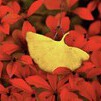


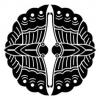
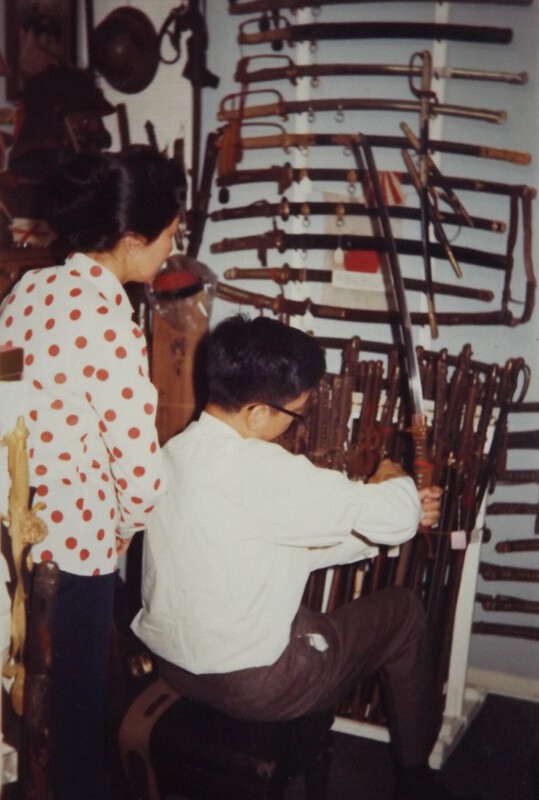






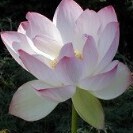






.thumb.jpg.bc10b59027a00aa142dce0349f3ba9e0.jpg)







